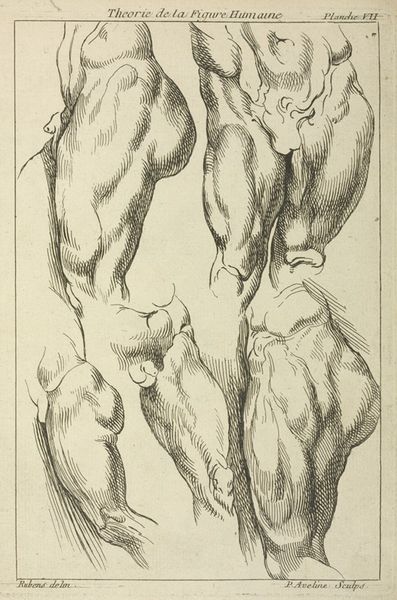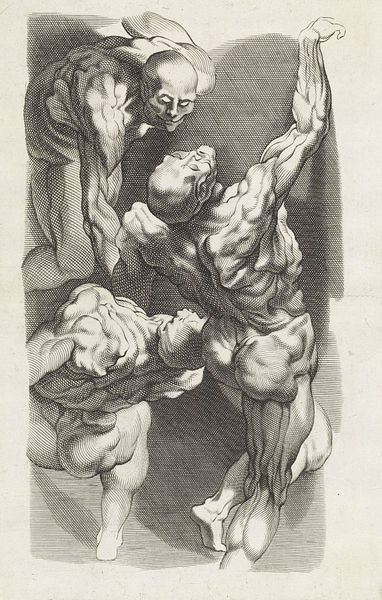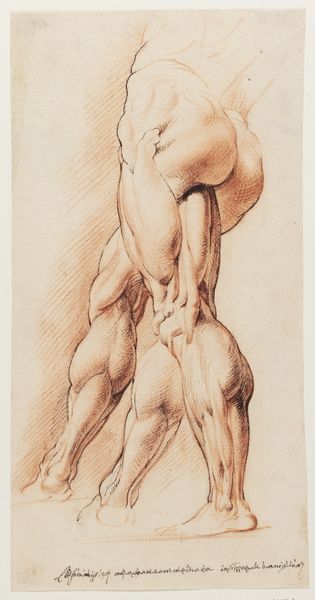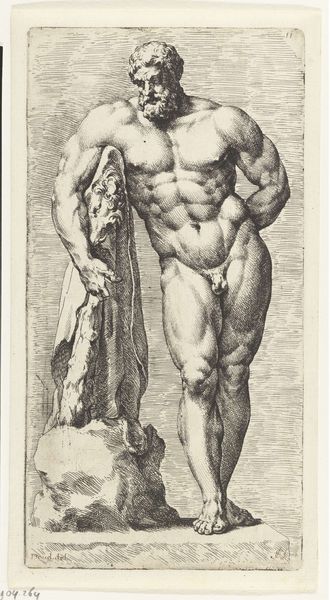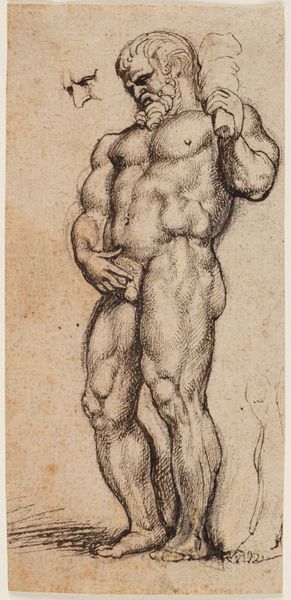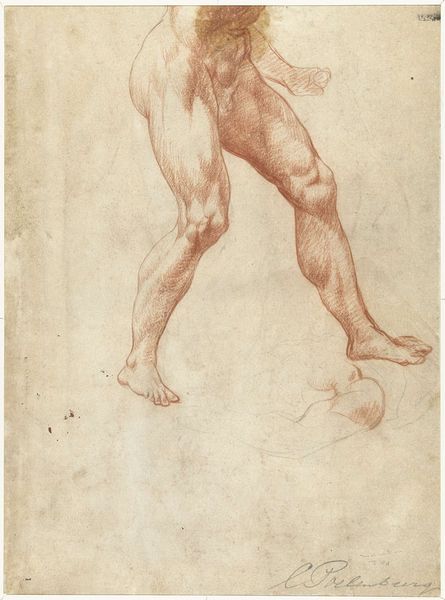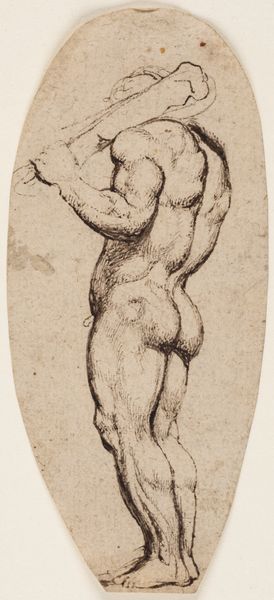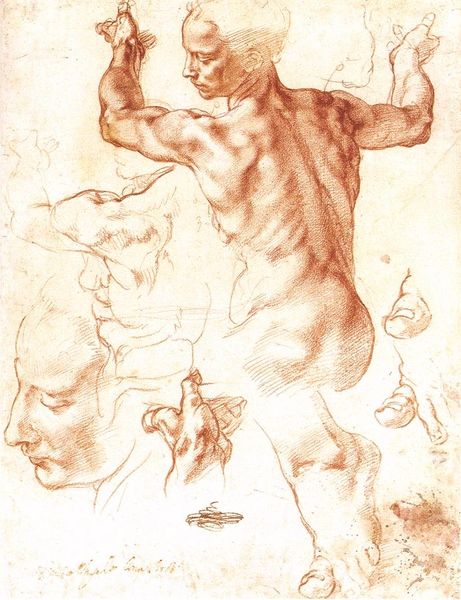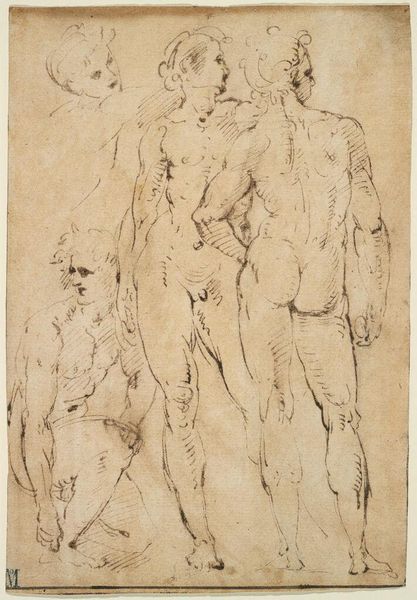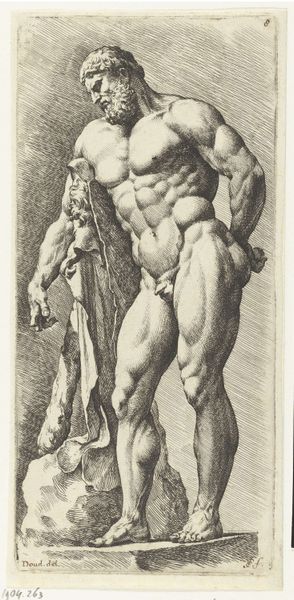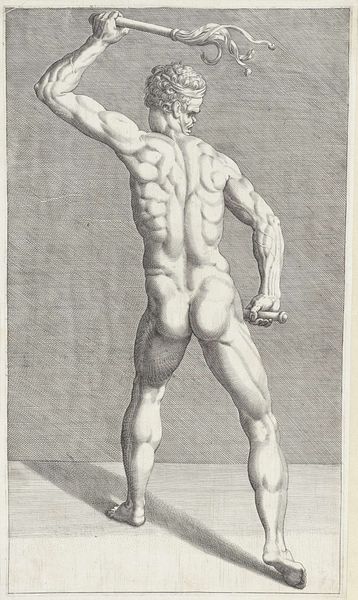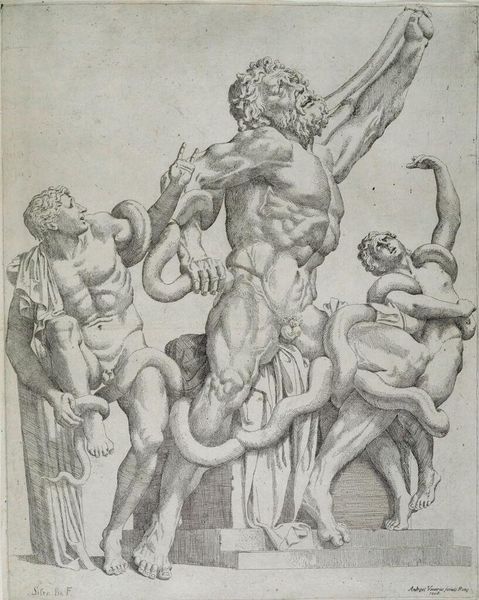
drawing, pencil
#
portrait
#
pencil drawn
#
drawing
#
pencil sketch
#
charcoal drawing
#
figuration
#
11_renaissance
#
pencil drawing
#
pencil
#
portrait drawing
#
nude
Dimensions: 29.5 x 23.5 cm
Copyright: Public domain
Curator: Bartolomeo Passerotti's "Nude Studies," dating back to around 1580, presents three male figures rendered in striking detail with pencil. What strikes you most about this piece? Editor: The sheer muscularity, honestly. It’s almost grotesque, pushing the boundaries of idealised male forms in art. There’s a real tension between admiration and, perhaps, discomfort? Curator: It's interesting you say that. Passerotti, active in Bologna, often created works emphasizing anatomical precision, likely influenced by the intense scientific and artistic exploration of the human body during the Renaissance. Editor: Precisely! It’s that context, though, that complicates it for me. Whose bodies were studied? Who had access to represent these forms and with what power dynamic at play? I wonder how notions of masculinity were constructed and reinforced during this period. Curator: Undoubtedly, artistic studies such as this one reflect and shape social standards. The figures project a clear sense of power and dominance; characteristics highly valued in the patriarchal societies of the Renaissance. Editor: And that depiction is so loaded, right? Are we meant to simply marvel at the skill, or should we be questioning the celebration of an almost aggressively masculine form? Curator: Well, Passerotti likely aimed to display his command over form and anatomy, skills highly valued at the time. The artwork was part of the broader visual culture influenced by artists such as Michelangelo, who heavily emphasized musculature in their figures. It would have served to train young artists. Editor: Which just shows how these traditions get passed down and reinforced through the academic structure, perpetuating ideals of what's beautiful, what's powerful, and who gets to represent those ideals. It invites a reevaluation, doesn't it? Curator: Absolutely. I see the value in these different viewpoints on a Renaissance artwork. Understanding its position within the social context really reveals a whole different set of implications. Editor: Yes, and looking critically helps us challenge the way we see both art and ourselves.
Comments
No comments
Be the first to comment and join the conversation on the ultimate creative platform.
